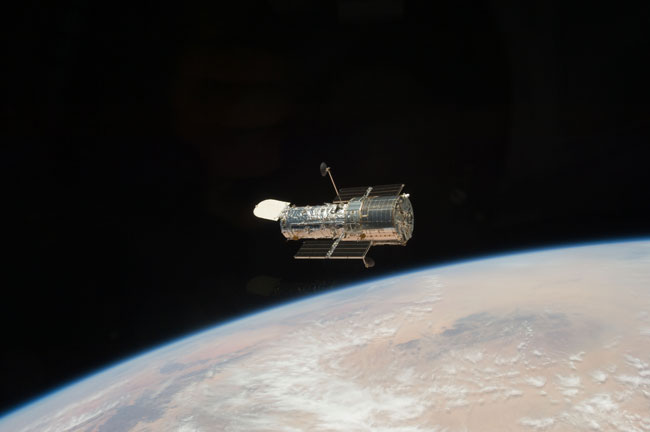U.S. Spy Satellite Agency Gives NASA 2 Space Telescopes

The United States' spy satellite agency is giving NASA two spare space telescopes free of charge, each potentially more powerful than the Hubble Space Telescope, NASA officials announced today (June 4).
The two spy satellite telescopes were originally built to fly space-based surveillance missions for the National Reconnaissance Office (NRO), but will be repurposed by NASA for astronomical research instead. Their donation to NASA was revealed in a surprise announcement.
Both NRO space telescopes have a main mirror nearly 8 feet wide (2.4 meters), rivaling the Hubble Space Telescope, and also carry a secondary mirror to enhance image sharpness, according to press reports. NASA's Hubble telescope is a veritable space icon that has been beaming stunning photos to Earth for 22 years.
NASA and NRO officials did not elaborate on the original design or mission for the reconnaissance telescopes, though officials told the Washington Post that the earliest either of the instruments could be recycled into a new space telescope and launched into orbit would be 2020. Finding the funding necessary to refit and launch the telescopes is a major hurdle, officials said.
NASA hopes to use one of the new space telescopes to hunt for mysterious dark energy, an invisible force that scientists think is reponsible for the accelerating expansion of the universe.
During a media teleconference today, NASA officials said the two telescopes have an appearance similar to the Hubble telescope: They are cylindrical in shape and covered in shiny reflective insulation. The two telescopes do not currently have names, they added.
The Hubble space telescope, which launched in 1990, is the size of a school bus and has become an astronomical icon. But Hubble is also aging. Since its 1990 launch, Hubble has been repaired or upgraded five separate times, most recently in 2009 when NASA astronauts paid the last-ever service call on the venerable instrument.
Sign up for the Live Science daily newsletter now
Get the world’s most fascinating discoveries delivered straight to your inbox.
Eventually, Hubble will be decommissioned and then intentionally destroyed by plunging into Earth's atmosphere over the Pacific Ocean.
Currently, NASA has no plans to replace Hubble, which is primarily an optical observatory, with a similar instrument. The space agency's next big orbital observatory is the James Webb Space Telescope, an infrared-only telescope designed to peer deep into the universe's 13.7 billion-year history.
This story was provided by InnovationNewsDaily, a sister site to LiveScience. You can follow SPACE.com Managing Editor Tariq Malik on Twitter @tariqjmalik. Follow SPACE.com for the latest in space science and exploration news on Twitter @Spacedotcom and on Facebook.

Tariq is the editor-in-chief of Live Science's sister site Space.com. He joined the team in 2001 as a staff writer, and later editor, focusing on human spaceflight, exploration and space science. Before joining Space.com, Tariq was a staff reporter for The Los Angeles Times, covering education and city beats in La Habra, Fullerton and Huntington Beach. He is also an Eagle Scout (yes, he has the Space Exploration merit badge) and went to Space Camp four times. He has journalism degrees from the University of Southern California and New York University.










